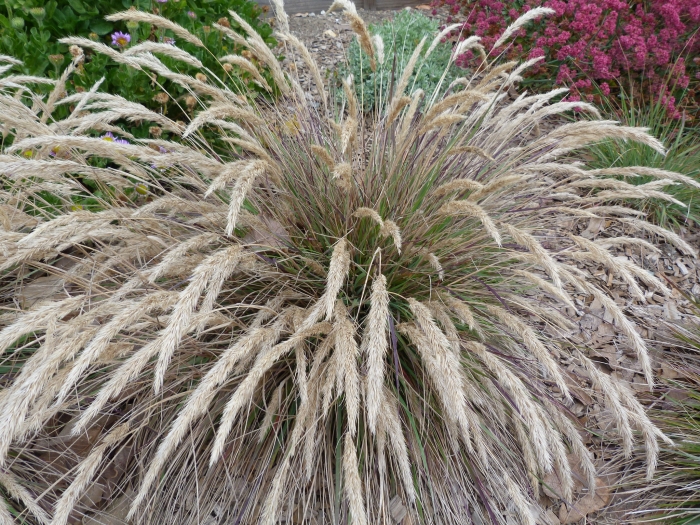Leafy Reedgrass
(Calamagrostis foliosa)
Leafy Reedgrass (Calamagrostis foliosa)
/
/

Plant Right
CC BY 2.0
Image By:
Plant Right
Recorded By:
Copyright:
CC BY 2.0
Copyright Notice:
Photo by: Plant Right | License Type: CC BY 2.0 | License URL: https://creativecommons.org/licenses/by-sa/2.0/ | Uploader: PlantRight1 | Publisher: Flickr |












Estimated Native Range
Summary
Calamagrostis foliosa, commonly known as Leafy Reedgrass, is an evergreen perennial grass native to coastal bluffs, open woodlands, and chaparral regions of California. It forms dense tufts of foliage 30 to 60 centimeters tall, with most leaves concentrated at the base of the stems. The inflorescence is a dense, narrow panicle of spikelets, each up to 12 centimeters long, with fruits tipped by bent awns. Flowering typically occurs in late spring to early summer, and the flowers are not particularly showy, but they add a fine texture to the landscape.
Leafy Reedgrass is valued for its low maintenance and adaptability to a range of garden settings, including naturalistic plantings and coastal gardens. It is often used as an ornamental grass for its foliage and form, and it can serve as a ground cover or in mass plantings. This grass thrives in full sun but can tolerate part shade, and it prefers soils with medium drainage. While it is drought-tolerant once established, it benefits from occasional watering during prolonged dry periods. Leafy Reedgrass is not known for significant pest or disease problems, but it can suffer from root rot in poorly drained soils. It is not typically invasive when grown outside its native range, but gardeners should monitor its spread as it can self-seed under ideal conditions.CC BY-SA 4.0
Leafy Reedgrass is valued for its low maintenance and adaptability to a range of garden settings, including naturalistic plantings and coastal gardens. It is often used as an ornamental grass for its foliage and form, and it can serve as a ground cover or in mass plantings. This grass thrives in full sun but can tolerate part shade, and it prefers soils with medium drainage. While it is drought-tolerant once established, it benefits from occasional watering during prolonged dry periods. Leafy Reedgrass is not known for significant pest or disease problems, but it can suffer from root rot in poorly drained soils. It is not typically invasive when grown outside its native range, but gardeners should monitor its spread as it can self-seed under ideal conditions.CC BY-SA 4.0
Plant Description
- Plant Type: Grass
- Height: 1-2 feet
- Width: 1-2 feet
- Growth Rate: Moderate
- Flower Color: N/A
- Flowering Season: Spring, Summer
- Leaf Retention: Evergreen
Growth Requirements
- Sun: Full Sun
- Water: Low, Medium
- Drainage: Medium
Common Uses
Bank Stabilization, Bird Garden, Border Plant, Deer Resistant, Drought Tolerant, Groundcover, Low Maintenance, Salt Tolerant, Street Planting
Natural Habitat
Native to coastal bluffs, open woodlands, and chaparral regions of California
Other Names
Common Names: Leafy Reed Grass
Scientific Names: , Calamagrostis foliosa, Calamagrostis sylvatica var. longifolia,
GBIF Accepted Name: Calamagrostis foliosa Kearney